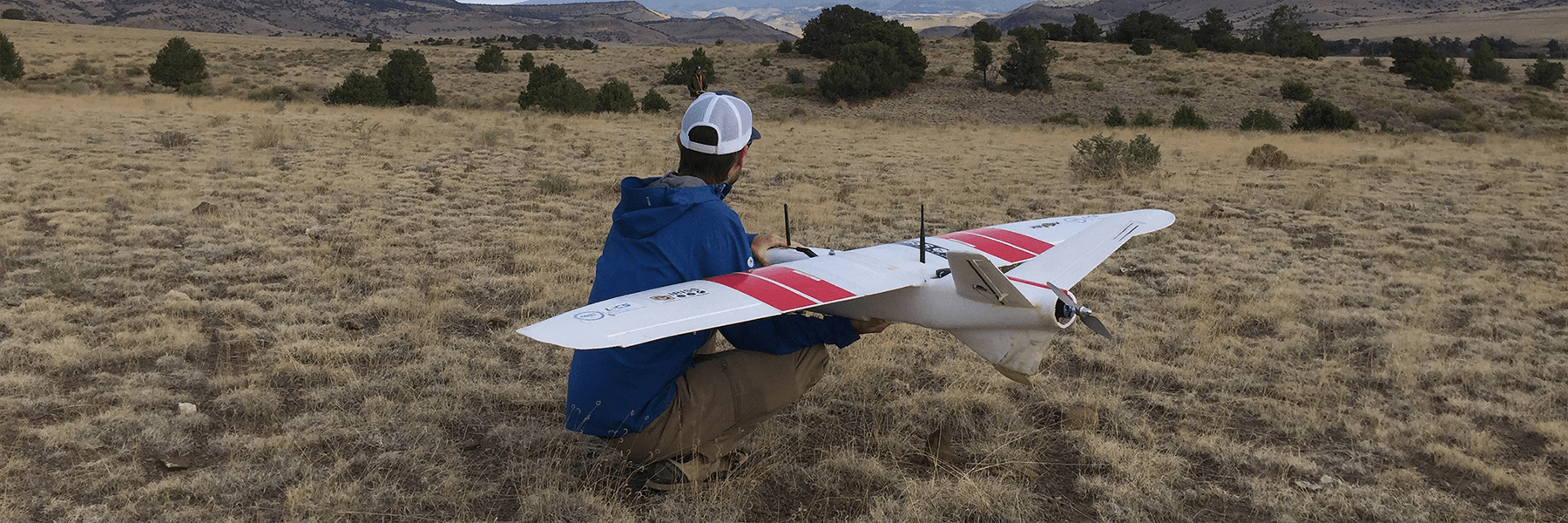Researchers Organize International Unmanned Aircraft Conference and Flight Week

Scientists have long conducted field experiments all over the world to learn more about the environment and the processes driving our weather and climate system. However, there have been limitations in gathering measurements of variability and vertical structure, and over difficult-to-reach environments. With the rapid development of robotic technology, remotely-piloted aircraft are becoming more sophisticated, providing researchers with opportunities to breach these limits and gain new perspectives on the atmosphere. Such perspectives help provide a more complete picture of air-sea-land systems, which can be used to improve forecast models.
A community of researchers from around the world will soon gather in Boulder, Colorado to exchange information and experiences in using unmanned aircraft for research applications. Gijs de Boer, a CIRES researcher at the ESRL Physical Sciences Laboratory (PSL), is lead organizer of the 6th International Society for Atmospheric Research using Remotely Piloted Aircraft (ISARRA) Conference, which will be held July 9-12 at the University of Colorado Boulder.
Following the conference, an estimated 100 attendees will deploy research drones and ground-based sensors as part of a Flight Week study, called ‘Lower Atmospheric Process Studies at Elevation – a Remotely-piloted Aircraft Team Experiment (LAPSE-RATE), from July 14-21 in Colorado’s San Luis Valley. This unique, high-altitude location includes farmland, grassland, rivers, and sand dunes, surrounded by mountain peaks, and will provide a variety of sampling opportunities related to understanding precipitation and boundary layer processes. In partnership with UAS Colorado, a Community Open House will kick off Flight Week on July 14. Attendees can watch demonstrations and talk to scientists about their equipment and research.
Other personnel at PSL involved in organizing these events include NOAA researchers Joe Cione, Janet Intrieri, and Gary Wick.
Scientists have long conducted field experiments all over the world to learn more about the environment and the processes driving our weather and climate system. However, there have been limitations in gathering measurements of variability and vertical structure, and over difficult-to-reach environments. With the rapid development of robotic technology, remotely-piloted aircraft are becoming more sophisticated, providing researchers with opportunities to breach these limits and gain new perspectives on the atmosphere. Such perspectives help provide a more complete picture of air-sea-land systems, which can be used to improve forecast models.
A community of researchers from around the world will soon gather in Boulder, Colorado to exchange information and experiences in using unmanned aircraft for research applications. Gijs de Boer, a CIRES researcher at the ESRL Physical Sciences Laboratory (PSL), is lead organizer of the 6th International Society for Atmospheric Research using Remotely Piloted Aircraft (ISARRA) Conference, which will be held July 9-12 at the University of Colorado Boulder.
Following the conference, an estimated 100 attendees will deploy research drones and ground-based sensors as part of a Flight Week study, called ‘Lower Atmospheric Process Studies at Elevation – a Remotely-piloted Aircraft Team Experiment (LAPSE-RATE), from July 14-21 in Colorado’s San Luis Valley. This unique, high-altitude location includes farmland, grassland, rivers, and sand dunes, surrounded by mountain peaks, and will provide a variety of sampling opportunities related to understanding precipitation and boundary layer processes. In partnership with UAS Colorado, a Community Open House will kick off Flight Week on July 14. Attendees can watch demonstrations and talk to scientists about their equipment and research.
Other personnel at PSL involved in organizing these events include NOAA researchers Joe Cione, Janet Intrieri, and Gary Wick.